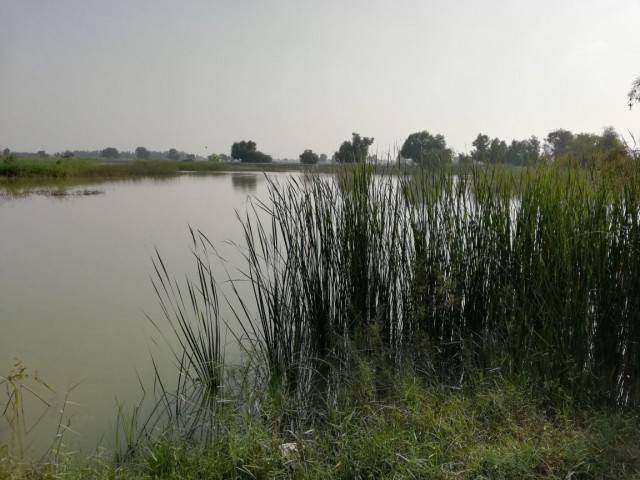Lungh Lake, a little known natural resort of Sindh
Located near Larkana, the lake once served as a hunting ground for top political figures

PHOTO: EXPRESS
This little-known lake sprawls over 98 acres and is considered an important wetland in Sindh. Actually located in District Qambar Shahdadkot, the lake is about 18 kilometer west of Larkana district. It was declared Sindh wildlife sanctuary in 1972 and re-notified in 1982.
Currently, the lake is a picture of the provincial government’s neglect as signboards for the lake on the main highway as well as vast swathes of the lake’s surroundings are covered with wild bushes.
Migratory Birds Day: ‘Conservation efforts needed to protect birds’
The main highlight of the lake is the large variety of migratory waterfowl which arrive here every year in winters all the way from Siberia. The area is a stopover for these birds, a huge number of which stay here till end of February. The lake is also the route of those birds which also move further to Badin.
In the past, national dignitaries, including former president Ayub Khan and former prime minister Zulfikar Ali Bhutto as well as tribal chieftains and nawabs, have visited the lake for hunting of ducks and other birds.
Currently, the lake has a small guest house constructed by the Sindh government but the beautiful natural treasure is little known to many as hunting has been prohibited here for over a decade.
The lake can become a tourist resort with special focus by the Sindh government and tourism department.
“At times the birds are in such huge numbers that the water surface becomes invisible,” Qambar Shahdadkot’s Deputy Commissioner Shah Mir Bhutto told The Express Tribune.
Migratory birds in danger as illegal hunting persists in Sindh
Lungh is one of the three lakes in the district Shahdadkot, with Hamal and Drigh being the other two, according to Qambar.
The guest house there, which often remains empty, has a few living rooms and a medium-sized hall with pictures of local and national dignitaries who had visited the place, posing with the hunted trophies.
The habitat of the lake can be divided into three types – open water with typha and Juncus on the edge; swampy area dominated by Tamarix; and surrounding rice fields with predominant Juncus.
Presently situated on the Indus flood plain, the lake was once part of the riverbed. An earthen embankment on the periphery forms boundaries of the lake, which normally dries out in summers when the temperature varies from 47 to 50 degrees Celsius.
“We are organising a three-day festival not only for promoting the lake but also for creating awareness among the locals. We are planning to hold the event in January 2018,” he said.



















COMMENTS
Comments are moderated and generally will be posted if they are on-topic and not abusive.
For more information, please see our Comments FAQ